
Colin Stafford-Johnson introduces us to The Wild Gardener Episode 1 with 'I've always loved wild places, places where nature's in charge'.
Colin grew up in a different world of immaculate lawns and gardens filled with Roses and Gardening was his family's life.
His Father was Television Gardener, Barney Johnson, but Colin as a child was always playing in the woods and the wild.
Colin introduces himself as a Wildlife Cameraman who has spent most of his life filming amazing places and creatures but now he is coming home.
Going back to the East Coast of Ireland he wants to turn his childhood garden into a wildlife haven.
Colin is not a Gardener but over the course of 2 years he wants to transform the abandoned acre of ground only using native plants to the area then let nature take over.
He will dig a pond, plant hedgerows, sow wildlife meadows and plant woodlands to attract as many creatures as he can to live with him in his very own Wild Garden.
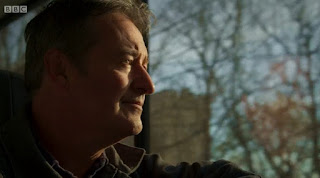
He is in County Wicklow in Ireland which is known as the Garden of Ireland, a varied and beautiful county.
He grew up in the middle of Co. Wicklow in a country cottage which is no longer theirs but his Mother kept some of the land.
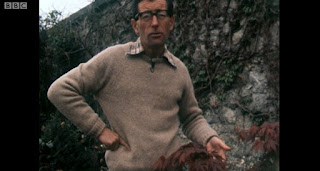
Their garden had perfect lawns and neat planting with definitely no room for weeds or wild flowers and this meant a lot of creatures were missing from the garden.
It is the creatures that now need preserving as they are in danger of disappearing completely.

The garden has not been touched in 40 years and over the next 2 years he will create something very special.
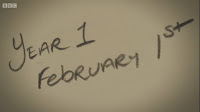
The ground has been overtaken by Brambles so the first job is to start to cut these back so the sun can get to the soil again.
The more different plants you have the more different sorts of wildlife you can attract so planting a native wildflower mix will transform the garden.
Colin knows how he wants it but does not really know what he is doing so mistakes will be made along the way.
He has made a huge pile of all the brambles and rubbish cleared from the ground.
The Plan

At the bottom of the garden he plans to plant lots of trees including Willow and Alder that will grow quickly and thrive in that area.
His cabin is in the middle so he will plant a wild flower meadow to look out on to.

With all these different habitats it should attract a whole range of creatures and Insects.
The work involved seems a little daunting but today is a big day and help arrives in the shape of a digger and workers.

He has the image of a Butterfly overhead and what is going to make it come to his garden rather than fly past, he needs to think like a Butterfly and get its needs right and then the rest of the wildlife too.
Colin speaks to Mark Bryson from EcoSeeds Wildflowers and they are starting with getting the surface briars off the surface.

Colin says he is then hoping that plants will come naturally to the garden that is missing In just a few days the area is already looking very different.
It is snowing and Colin is sheltering under the canopy of his cabin and when the weather improves he is in the pond area patting down the sides of the banks as the digger clears the dirt.

It is going to be about a metre deep in the middle and then on one side the water will spill out to create a wetland.
They add sand to the bottom of the pond then they will add a protector for the liner.

The pond is then filled and by mid Summer Colin expects it to be full of life.
Colin is watch old episodes of The Garden his Dad Tv programme where he is talking about a Red Japanese Maple that needs good sun and lots of light'.
He says what a good man his father was and 'didn't have a bad bone in his body' and he remembers the good times they had together.
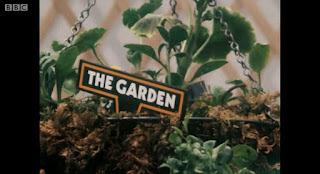
He was 'Mr Gardener' and they thought he was 'the Garden Messiah' and most of Ireland watched him.
Colin grew up on the outskirts of Dublin and the family business was a Garden Centre and Nursery and his father had actually studied Botany so knew a lot about the natural world.
They spent a lot of time outdoors and this has been a big influence on Colin.
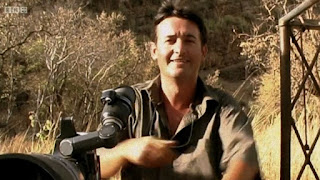
As well as seeing the good things he has also witness the devastation of the wildlife and habitat around the world.
There is nowhere in the world that doesn't make him feel sad and powerless but you need a project or something you can do to make a difference however small.
Any bit of land can always be made better for nature.

People in their own garden often try to grow things that do not belong and struggle and look for advice, 'get rid' says Colin plant something that will thrive instead.
The whole area going to become a mini woodland and he has planted Rowan, Hazel and Silver Birch trees already.
He now planting some Alder trees which is a much overlooked native tree which likes damp soil and loads of insects are attracted to it making it a good choice for a garden.
Willow trees people see as a pest or weed but it is also a very important tree and in March it has Catkin for pollen and good for emerging Queen Bees.
Prehen Wood Co. Derry
Colin is off to visit Prehen Wood Co. Derry which is managed by the Woodland Trust a small Ancient woodland on the edges of Derry.
It is only 18 Acres and so much woodland has been cleared that there is hardly any left and it is such a lovely relaxing place to visit with very old trees and hidden woodland creatures.
It is a real connection to the past and how the whole of Ireland would have looked and if we all do our bit we once again could have them to wander in.
The Garden is playing again and this time it is Chrysanths being planted and back to Colin who is planting his first wild flowers in the garden.
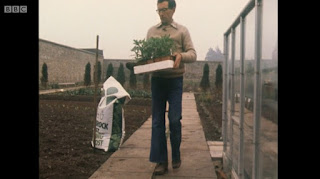
They are clumps of Lesser Celandine a favourite of William Wordsworth who also wrote about these as well as the better know Daffodil.
He remembers when he was a Schoolboy and he used to read the poets like Keats, 'Seasons of mist and mellow fruitfulness' and the garden are the images he got in his mind from the poems.
The Lesser Celandine are one of his favourite wild plants and they look like overgrown Buttercups but there Marsh Marigolds and he is planting them by the waters edge.

With pond planting you just stick them in and leave them and the only maintenance is every few years you may need to clear some if overgrown.
The sun rising is very welcome on days when the nights are still cold and Colin is sat on his porch with a coffee watching the birds wake up.
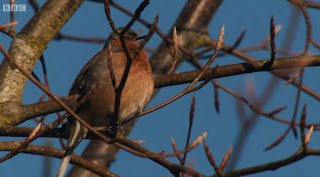
Colin never imagined he back in his childhood playground and as a child he knew all the bird songs.
He tried once to record their sounds and got up very early and leave the house without waking anyone and set an old tape recorder up in a tree and press the record button and then leave it.


They start by giving the ground a rake and mixing the seeds together and sow and rake the seeds into the ground.
The seed mix includes annuals like scented Mayweed, 2 different Poppies and Corn Marigold as well as perennials.
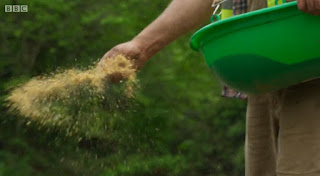
You need to create poor soil so they are planting so ready grown plants so the wildflowers and grass can co-exist happily.
The soil is also very dry at the moment and this part of Ireland usually gets rain but there has been none for weeks and they need some now to help germinate the seeds.
EcoSeeds Strangford Co Down
Mark Bryson is in the fields at EcoSeeds Strangford Co Down this is where they grow all the different species of wild flowers.
They collect the seeds out in the wild with the Landowner's permission and then grow about 250 plants rom that then again harvest their seeds before planting them out in the field to harvest.

People talk about how Ireland was in the 1920's and 30's and how there were butterflies everywhere as there were loads of wild meadows before agriculture took over the fields.
There was lots more birds and insects back then because of the wild flowers which are like the base of a pyramid supporting everything on top.
The first question they ask customers is what is growing already so that no existing plants are destroyed.
They are not just about conserving habitats but actually enhancing on what is already there.
Colin is building a dead hedge out of all the cut branches and clippings and the living hedge will take a few years to establish so this will offer protection and shelter in he meantime.
There is a lane that runs along side the garden and this will also give him some privacy from the outside world.

It also provides cover for Newts, frogs and Amphibians from his pond and it is important to create these micro habitats.
People who do this for a living probably would say he doing it all wrong but he having a go and the wildlife will appreciate it however it is constructed.
The Dead Hedge is already being used as overnight Bank Voles have moved in and they were not in Ireland when he was a boy as they only moved here in the 1950's.

They were unintentionally imported and no one knows how exactly and he loves them and can hear them chewing away in the hedge.
It is rare not to have rain for a week or 2 in this part of Ireland but now its been nearly 7 weeks with none and the ground is bone dry.
He never foresaw drought being a problem in getting his wild flower meadow to grow.

If there is no rain in the next 10 days it is going to be a disaster for the garden.
This format of 4 episodes is as shown on BBC NI and may differ slightly than shown on BBC 2
All Photographs are copyright of BBC.com


No comments:
Post a Comment